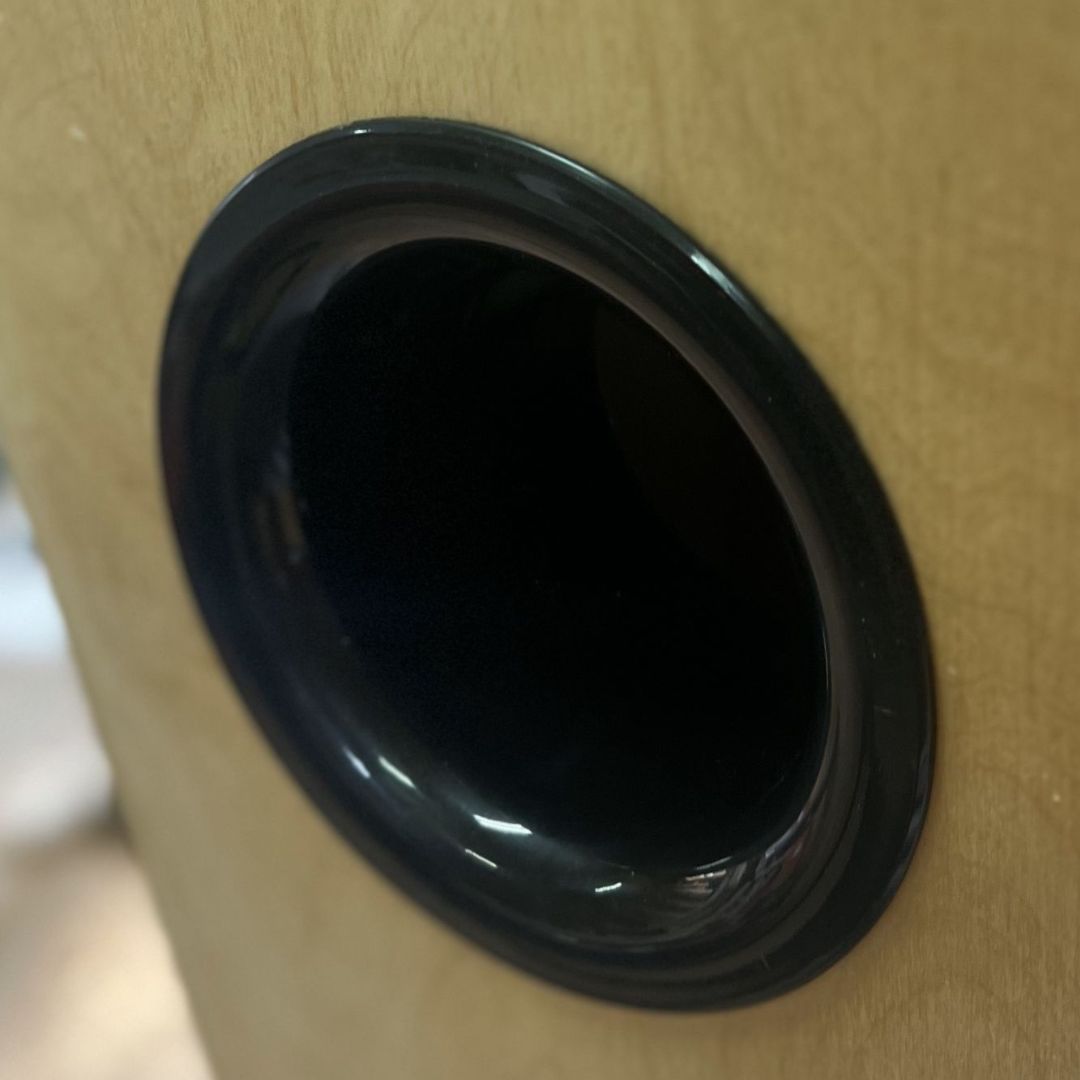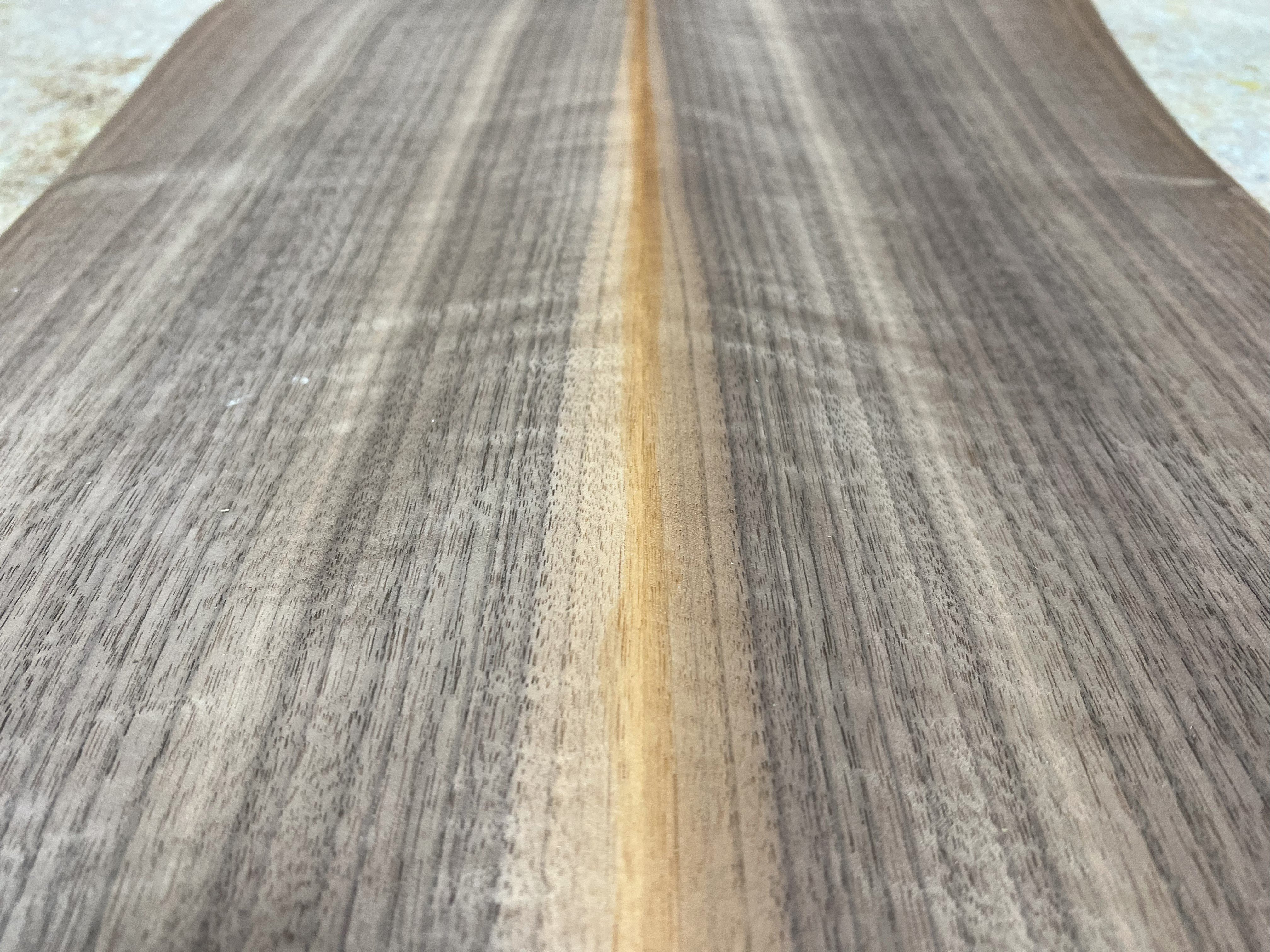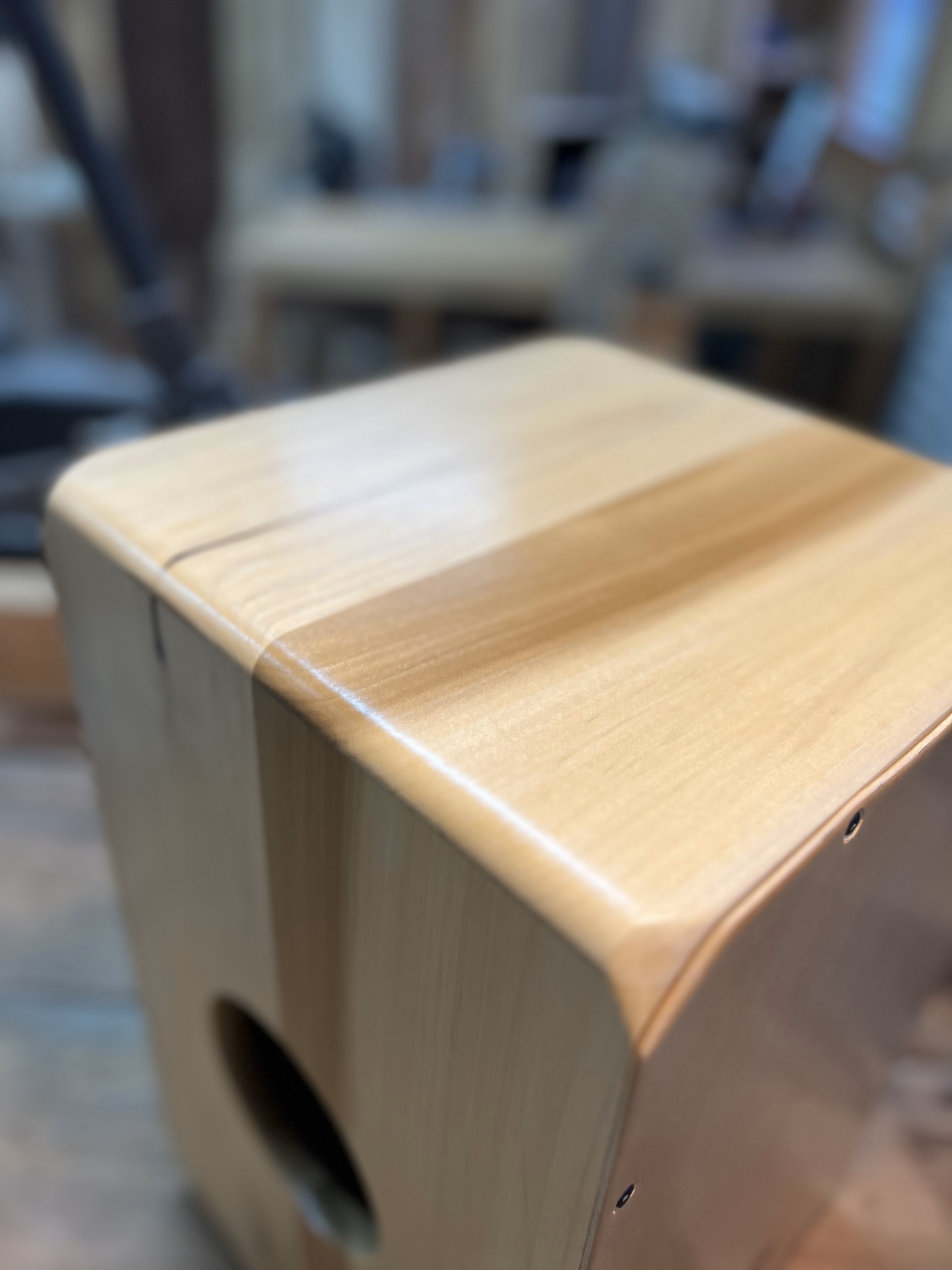Posted by Steve Head on 15th Sep 2024
Understanding Warmth: What Affects the Warmth of a Cajon?
When musicians talk about the "warmth" of a cajon, they’re often referring to the instrument's ability to produce a rich, full-bodied sound that is pleasing to the ear. Warmth in a cajon’s tone is characterized by its smooth, resonant low frequencies and the absence of harsh or overly bright tones. It’s the kind of sound that envelops you, making the cajon feel more organic and natural. As the owner of Kopf Percussion, I’ve spent years crafting cajons with varying degrees of warmth to suit different musical styles. In this blog post, I’ll explore what affects the warmth of a cajon and how these factors can be adjusted to achieve the perfect sound.
1. Material of the Tapa
- Impact on Warmth: The tapa, or front playing surface, is the primary component that influences the warmth of a cajon. The type of wood used for the tapa has a significant impact on the sound. Softer woods like mahogany, cedar, or walnut tend to produce a warmer tone, characterized by richer low-end frequencies and a smoother, more mellow sound. These woods allow for greater vibration, which enhances the resonance and warmth of the instrument. In contrast, harder woods like birch or maple might produce a brighter, more articulate sound with less inherent warmth.
- Example: At Kopf Percussion, I carefully select tapa materials to match the desired tonal qualities. For instance, a walnut tapa could be chosen for its ability to produce a deep, warm tone that’s ideal for genres like jazz, blues, or folk.
2. Thickness of the Tapa
- Impact on Warmth: The thickness of the tapa also plays a crucial role in shaping the warmth of the cajon. A thicker tapa generally produces a warmer tone because it vibrates more slowly, emphasizing the lower frequencies and creating a more resonant, fuller sound. A thinner tapa, while more responsive and brighter, might lack the depth and richness associated with a warm tone.
- Example: Depending on the player’s preference, I might recommend a thicker tapa for those seeking a cajon with enhanced warmth, especially if they play in acoustic settings where a rich, enveloping sound is desired.
3. Body Material and Construction
- Impact on Warmth: The material and construction of the cajon’s body are key factors in determining the warmth of its sound. Dense woods like walnut or cherry are known for producing a warm, resonant tone due to their ability to enhance the lower frequencies. The construction of the cajon, including the thickness of the walls and the internal bracing, also affects how much warmth is produced. A well-constructed cajon with solid, dense materials will naturally emphasize the warmth in its tone.
- Example: At Kopf Percussion, I use high-quality hardwoods for the body of the cajon to ensure a warm, resonant sound. The internal construction is designed to maximize resonance while minimizing unwanted vibrations, resulting in a rich, full-bodied tone.
4. Size and Shape of the Cajon
- Impact on Warmth: The size and shape of the cajon significantly influence its tonal characteristics, including warmth. Larger cajons with more internal volume typically produce a warmer sound because the increased airspace allows for greater resonance of the low frequencies. The shape of the cajon, particularly the depth and width, can also affect how sound waves are amplified and sustained, contributing to the overall warmth.
- Example: I design each cajon at Kopf Percussion with specific dimensions that optimize warmth and resonance. A deeper cajon with a larger sound chamber will naturally emphasize the lower frequencies, making it ideal for players who prefer a warm, bass-heavy sound.
5. Snare System and Its Impact on Warmth
- Impact on Warmth: The snare system inside the cajon can either enhance or reduce the warmth of the sound. Snares that are too tight or overly pronounced might introduce a sharper, more metallic tone that can detract from the warmth. On the other hand, a snare system that is well-integrated and balanced can add a subtle texture without overpowering the warmth of the lower frequencies.
- Example: In my S-Series Snare Cajons, the snare system is carefully calibrated to complement the natural warmth of the wood, ensuring that the snare effect enhances the overall tone without compromising the rich, resonant sound that players desire.
6. Sound Hole Size and Placement

- Impact on Warmth: The size and placement of the sound hole are critical factors in shaping the warmth of the cajon. A larger sound hole allows more air to escape, which can reduce warmth by lessening the resonance of the low frequencies. Conversely, a smaller sound hole retains more of the bass frequencies within the cajon, contributing to a warmer, fuller sound. The placement of the sound hole, usually at the back of the cajon, also affects how the sound is projected and how the warmth is perceived by the listener.
- Example: I experiment with different sound hole designs at Kopf Percussion to achieve the optimal balance of warmth and projection. A smaller sound hole placed strategically can enhance the richness and depth of the cajon’s tone, making it more resonant and warm.
Conclusion: Enhancing the Warmth of Your Cajon
Warmth is a defining characteristic of a cajon’s tone, giving the instrument a rich, resonant quality that is both pleasing and versatile. By understanding what affects the warmth of a cajon—such as the materials used, the construction, and your playing technique—you can tailor your instrument’s sound to suit your musical needs. Click here to learn more about acoustic tonewoods.
At Kopf Percussion, I’m committed to crafting cajons that offer the perfect balance of warmth, clarity, and resonance. Each cajon is designed with careful attention to detail, ensuring that you get the best possible sound for your music. Let’s work together to create the perfect warm tone for your playing style.




